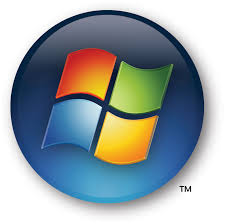
Microsoft Windows is a series of graphical interface operating systems developed, marketed, and sold by Microsoft.
Microsoft introduced an operating environment named Windows on November 20, 1985 as a graphical operating system shell for MS-DOS in response to the growing interest in graphical user interfaces (GUI). Microsoft Windows came to dominate the world's personal computer market with over 90% market share, overtaking Mac OS, which had been introduced in 1984. As of September 2013, the most recent versions of Windows for personal computers, mobile devices, server computers and embedded devices are respectively Windows 8, Windows Phone 8, Windows Server 2012 and Windows Embedded 8.
Windows 8, the successor to Windows 7, was released generally on October 28, 2012. A number of significant changes were made on Windows 8, including the introduction of a user interface based around Microsoft's Metro design language with optimizations for touch-based devices such as tablets and all-in-one PCs. These changes include the Start screen, which uses large tiles that are more convenient for touch interactions and allow for the display of continually updated information, and a new class of apps which are designed primarily for use on touch-based devices. Other changes include increased integration with cloud services and other online platforms (such as social networks and Microsoft's own SkyDrive and Xbox Live services), the Windows Store service for software distribution, and a new variant known as Windows RT for use on devices that utilize the ARM architecture
Windows Interface
Windows 8 uses a new graphical user interface (long known as Metro ) named Modern UI . This environment is based on a brand new splash screen consists of dynamic tiles, similar to those found on the operating system Windows Phone . Each tile represents an application, and may have no practical information you enter in the application. For example, the Messages application shows the number of unread messages so that the Weather app shows the temperature depending on the location of the user. These applications are launched in full screen, and are able to transmit information between them. Applications in the new interface are developed with the new platform Windows Runtime, using various programming languages such as C + +, Visual Basic, C #, and HTML combined with JavaScript.
The traditional office environment is accessible from a tile. The start button on the taskbar has been moved to the charm bar, accessible by plating the cursor / finger at the bottom left of the screen. This opens the start screen, hotspot Windows 8, rather than the traditional start menu.
The applications developed for this new environment were previously referenced as applications for Metro style development; they allow the user to stay in the same environment as the main office with a design in this whole system
Goals
During the development of Windows 8 Microsoft were to include the following objectives:
- Increase the usability of Windows on touch-screens through integration of a new user interface
- Improve clarity by removing the glass effects the Aero interface
- Increase the stability and speed
 RSS Feed
RSS Feed